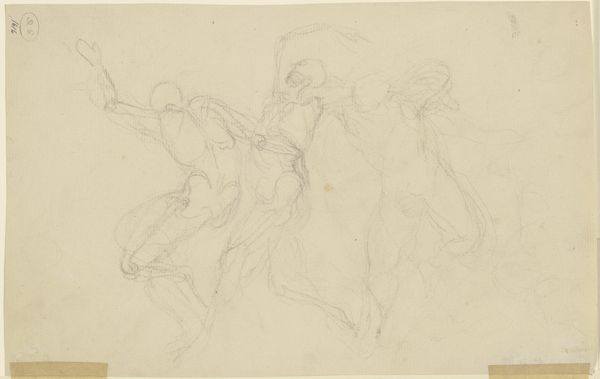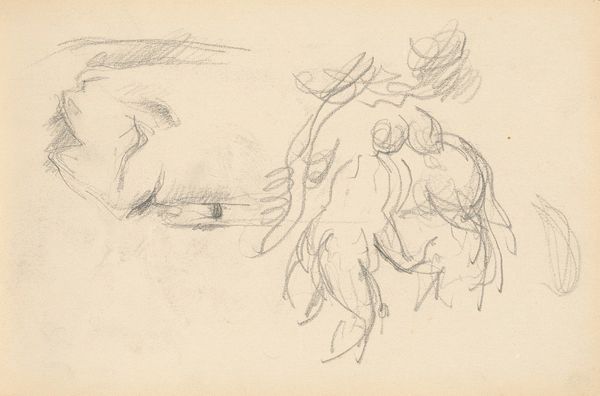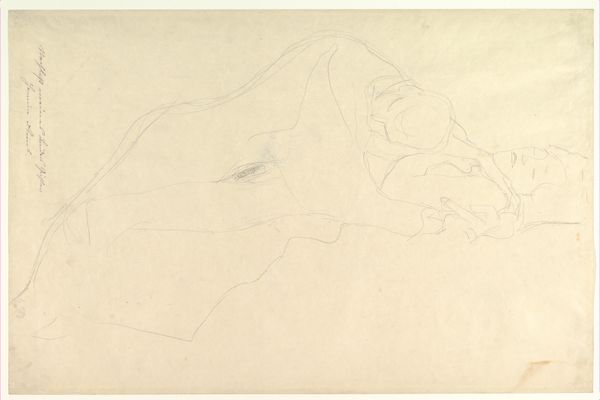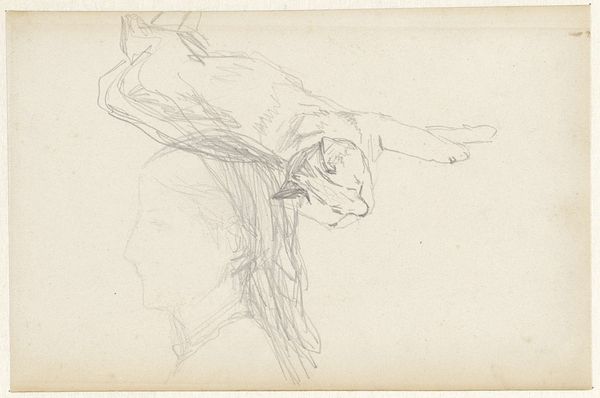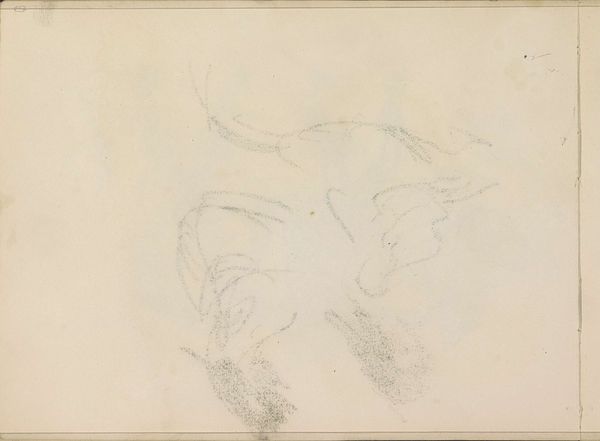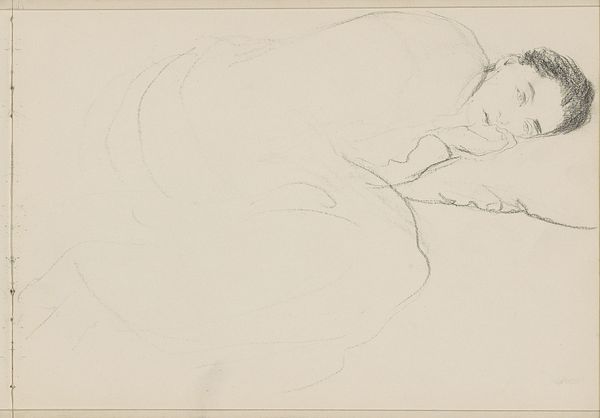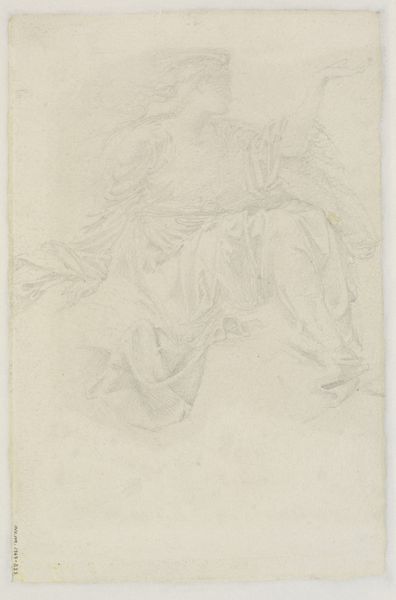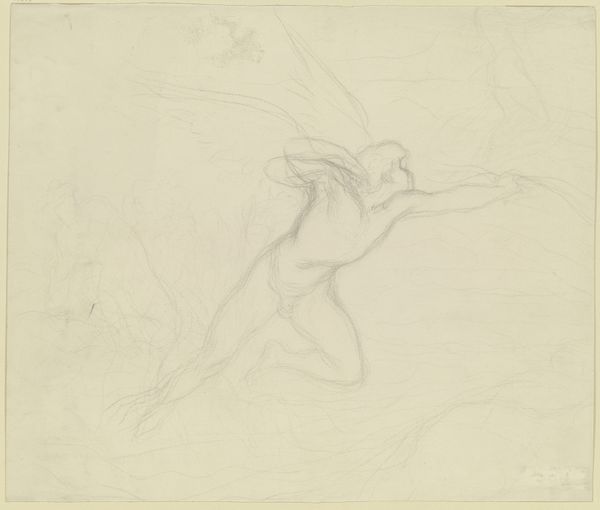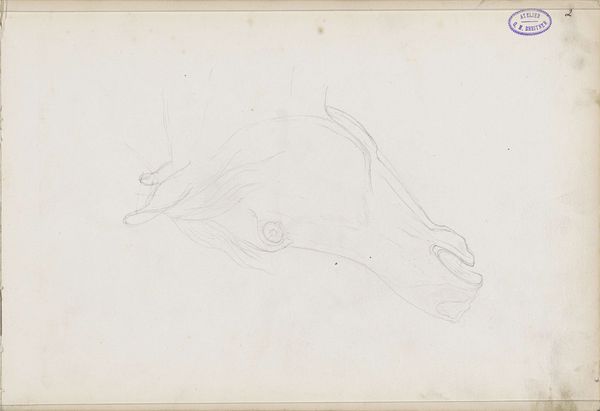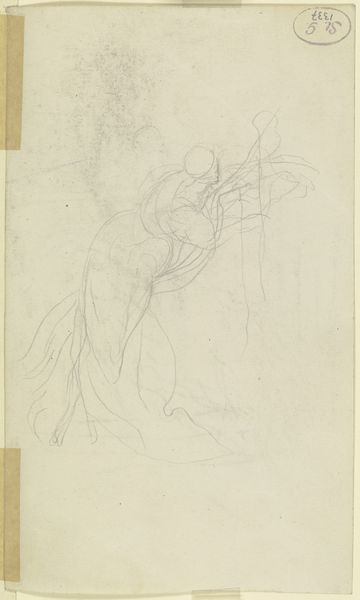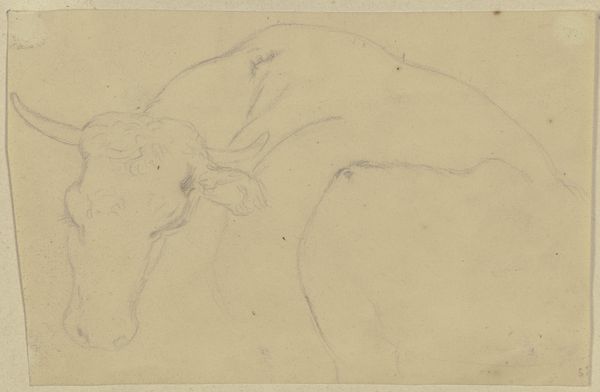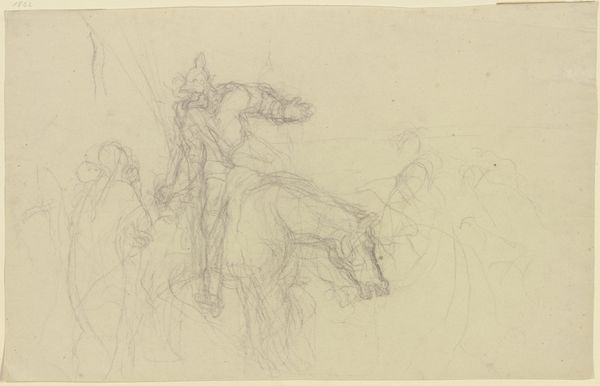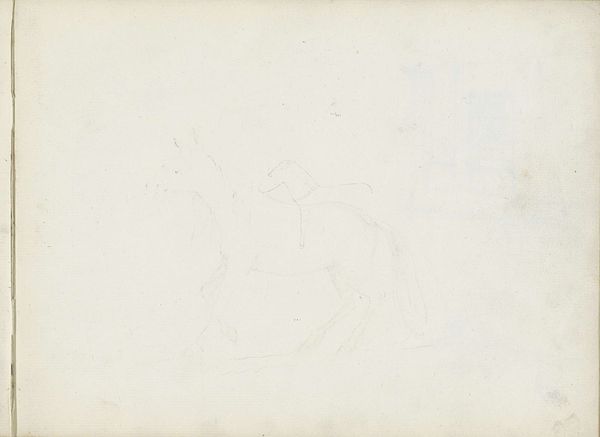
drawing, paper, pencil
#
pencil drawn
#
drawing
#
pencil sketch
#
figuration
#
paper
#
pencil drawing
#
pencil
#
line
Copyright: Rijks Museum: Open Domain
Editor: This is "Danspaar," a pencil drawing on paper created sometime between 1865 and 1913. It depicts, as the name suggests, a pair of figures dancing, but they are rendered with such faint, almost ephemeral lines. It makes me wonder... what can we see in this seemingly simple sketch that might speak to broader themes? Curator: I'm drawn to the implied intimacy within its ambiguity. Considering the period it was created, can we interpret the 'dance' not just literally, but as a carefully constructed social interaction? Think about the societal expectations placed on couples at the time and how their public displays, even something as innocuous as dancing, were governed by strict rules, often reflective of unequal power dynamics. Editor: That's fascinating. I hadn't considered the restrictions. Are you suggesting that even a light sketch like this might be a quiet commentary on social constraints? Curator: Potentially. Or even just an exploration of human connection within those constraints. The lightness of the lines could signify the fragility or tentative nature of those connections, the subtle push and pull, literally visualized here as a dancing couple. What does the sketch omit? Editor: Details, for one. You can barely see their faces... Is it intended to depersonalize them, making them stand for any couple, every couple? Curator: Exactly! That lack of individualization allows us to project our own understanding of relationships onto the work, to consider how power, gender, and identity intersect within them, regardless of a specific time or place. What might a contemporary viewer bring to the work? Editor: Perhaps a critique of traditional gender roles or a celebration of fluidity within partnerships, reading against the grain of presumed heteronormativity of the time. It seems almost a Rorschach test of our own assumptions about relationships! Curator: Precisely! It's a reminder that art is always in dialogue – with its past and with our present. Editor: This conversation changed my perspective. Thank you for the nuanced approach! Curator: And thank you for being open to new ideas, this dialogue has been very helpful.
Comments
No comments
Be the first to comment and join the conversation on the ultimate creative platform.
